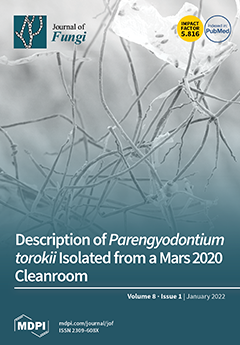In previous work, we developed a
Saccharomyces cerevisiae strain (DLG-K1) lacking the main monosaccharide transporters (
hxt-null) and displaying high xylose reductase, xylitol dehydrogenase and xylulokinase activities. This strain proved to be a useful chassis strain to study new glucose/xylose transporters, as
[...] Read more.
In previous work, we developed a
Saccharomyces cerevisiae strain (DLG-K1) lacking the main monosaccharide transporters (
hxt-null) and displaying high xylose reductase, xylitol dehydrogenase and xylulokinase activities. This strain proved to be a useful chassis strain to study new glucose/xylose transporters, as SsXUT1 from
Scheffersomyces stipitis. Proteins with high amino acid sequence similarity (78–80%) to SsXUT1 were identified from
Spathaspora passalidarum and
Spathaspora arborariae genomes. The characterization of these putative transporter genes (
SpXUT1 and
SaXUT1, respectively) was performed in the same chassis strain. Surprisingly, the cloned genes could not restore the ability to grow in several monosaccharides tested (including glucose and xylose), but after being grown in maltose, the uptake of
14C-glucose and
14C-xylose was detected. While SsXUT1 lacks lysine residues with high ubiquitinylation potential in its N-terminal domain and displays only one in its C-terminal domain, both SpXUT1 and SaXUT1 transporters have several such residues in their C-terminal domains. A truncated version of
SpXUT1 gene, deprived of the respective 3′-end, was cloned in DLG-K1 and allowed growth and fermentation in glucose or xylose. In another approach, two arrestins known to be involved in the ubiquitinylation and endocytosis of sugar transporters (
ROD1 and
ROG3) were knocked out, but only the
rog3 mutant allowed a significant improvement of growth and fermentation in glucose when either of the XUT permeases were expressed. Therefore, for the efficient heterologous expression of monosaccharide (e.g., glucose/xylose) transporters in
S. cerevisiae, we propose either the removal of lysines involved in ubiquitinylation and endocytosis or the use of chassis strains hampered in the specific mechanism of membrane protein turnover.
Full article






